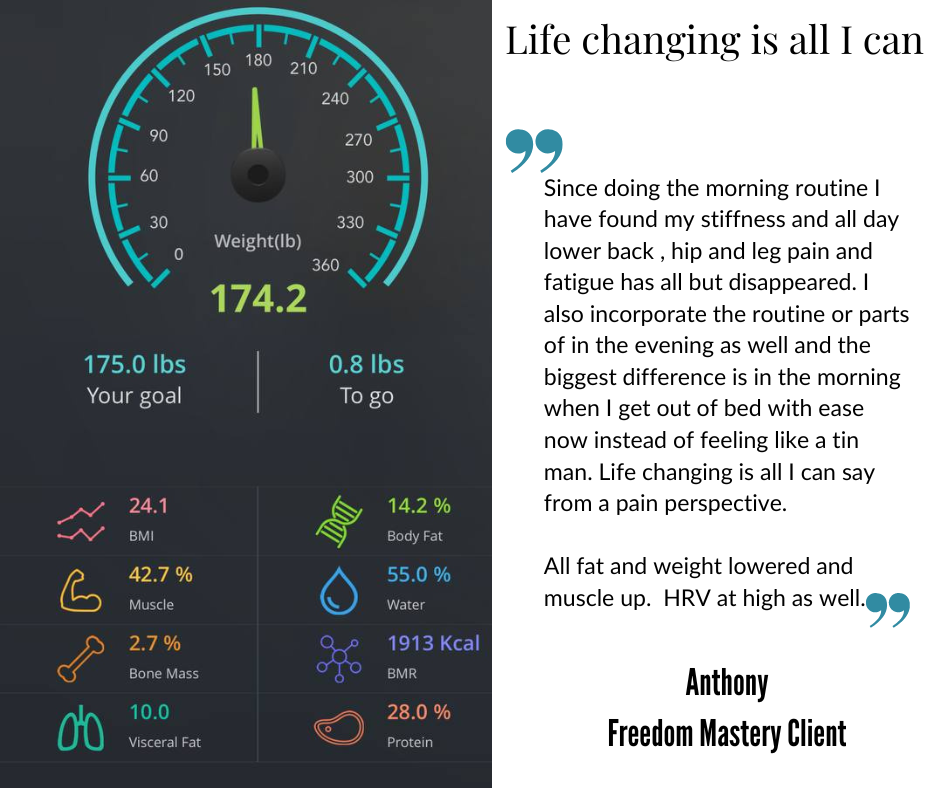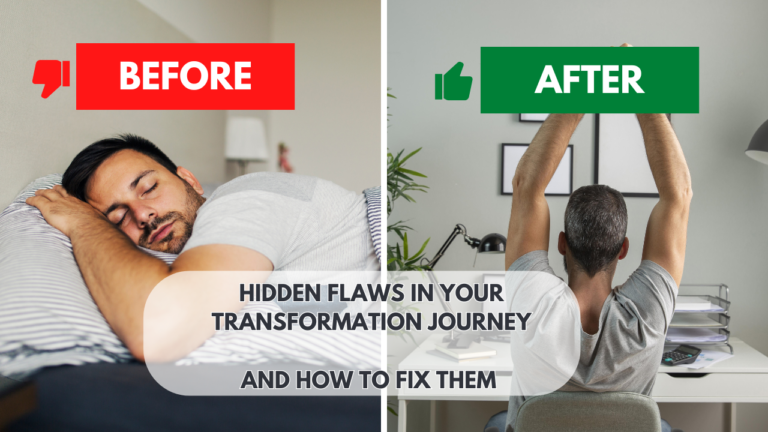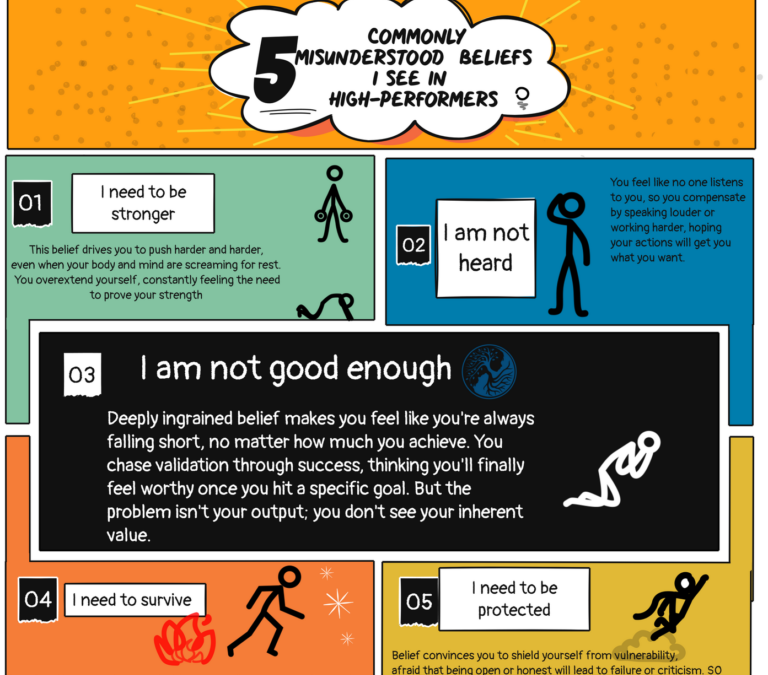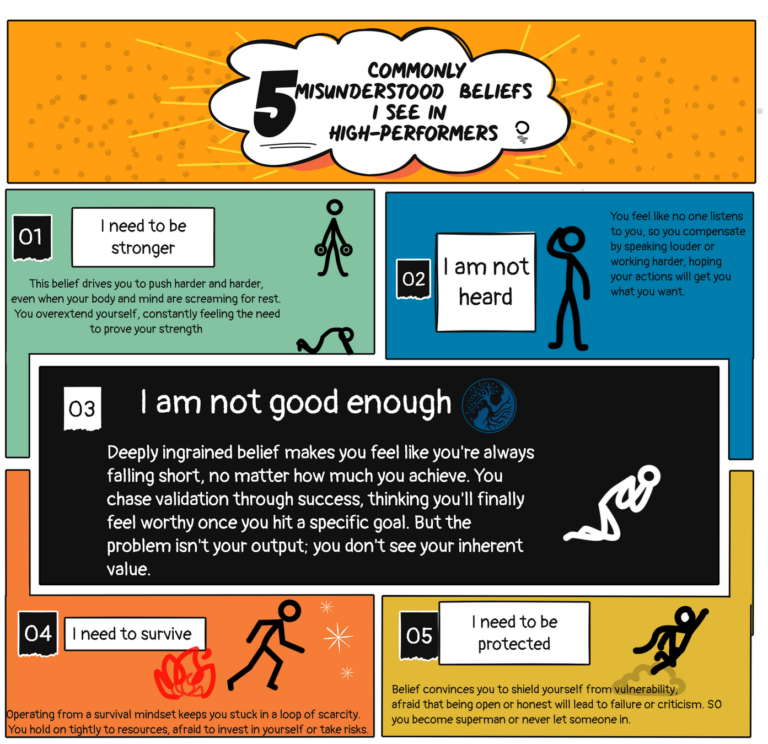Ever feel like you’re doing all the right things but still hitting a wall? What if the secret to unlocking limitless energy isn’t just in what you do but how you do it? This blog is your ultimate guide to rethinking your workout routine. It is time to finding that sweet spot between muscle and mind. So you can leveling up your life in ways you never thought possible. Read on and prepare to unleash your full potential.
The Key to All-Day Energy is all in how you move.
Think back to the last time you set a big goal for yourself. You probably felt a surge of excitement, eager to make a lasting change finally. You may have hired a coach, joined a mastermind, or thrown yourself into a new program. You took action, expecting results. But something happened along the way—your progress stalled. You got stuck. And suddenly, you began questioning everything.
Sound familiar?
If so, you’re not alone. Most people make two critical mistakes when they set out on a transformation journey. They’re so eager to see results that they rush ahead, skipping the most important steps. The problem is that these steps are the very foundation of real, lasting change.
In this blog, we’re going to dive deep into the mistakes that are holding you back, the invisible barriers you’ve unknowingly built, and how to finally overcome them. By the end of this, you’ll understand why your past attempts haven’t worked and how to lay the groundwork for the transformation you’ve been chasing.
Mistake #1: Skipping the Basics—And Paying the Price
What is the biggest mistake people make? They skip the basics. You might not think much of it at the time. After all, it’s easy to believe that action equals progress. You feel like you’re “doing the work” because you’re attending sessions, taking notes, and implementing strategies. But are you really setting yourself up for success?
Here’s where it goes wrong: You focus on big goals—improving your health, mastering your emotions, becoming more productive—without first building the foundation to support those changes. You’re trying to build a skyscraper on shifting sand.
Why does this matter? Because the basics—those seemingly simple skills like regulating your nervous system or having an honest internal dialogue—are what hold everything together. Without them, you’re destined to repeat the same cycles of frustration and failure. Think of the countless times you’ve started a new routine only to burn out or lose motivation. It’s not that you didn’t work hard—it’s that you skipped the groundwork that would make that work last.
What happens when you skip the basics?
You continue spinning your wheels. Your nervous system remains in overdrive, triggered by the stressors and unresolved emotions that you haven’t learned to control. You might think, “I’ve got this—I can push through.” But in reality, you’re setting yourself up for a crash. You may feel productive in the moment, but it’s only a matter of time before that surface-level progress starts to crack.
Now, picture your future self, the one who didn’t skip the basics. This version of you has mastered emotional regulation and has a calm, centered nervous system. When challenges arise, you face them head-on with resilience, knowing that your foundation is strong. Every setback does not throw you off course. Instead, you easily handle them, pushing forward with focus and clarity.
Mistake #2: Ignoring Co-Regulation—Trying to Go It Alone
The second mistake? Believing you can do it all on your own. You’ve heard the phrase, “pull yourself up by your bootstraps,” and you’ve taken it to heart. You think, “I’m strong. I can handle this myself.” But here’s the truth: No one succeeds in isolation.
What is co-regulation? It’s the process of having someone—whether it’s a coach, mentor, or guide—help you regulate your nervous system. It’s more than just giving advice or holding you accountable. Co-regulation is about creating a safe space where you can release the stress and emotional baggage that’s holding you back.
Most people don’t realize how much their past is controlling their present. Old experiences, unresolved trauma, and subconscious patterns keep you trapped in a cycle of stress. And until you learn to regulate your nervous system with the help of someone else, you’ll remain stuck.
Think about this:
How many times have you tried to push forward, only to find yourself repeating the same mistakes? How often have you told yourself you’ve got it all under control, only to face burnout and frustration once again?
Now, imagine a different future. This time, you’ve accepted that you can’t do it alone, and you’ve allowed yourself to be guided. You have someone in your corner who understands the patterns you can’t see. With their help, you’ve started to release old habits and regulate your emotions in real-time. You no longer feel overwhelmed by stress or paralyzed by fear of failure. You’re moving forward with strength, clarity, and a sense of calm you’ve never experienced before.
The Power of Healthy Competition—With Yourself
Most people never discuss the importance of healthy competition with themselves in transformation. But let me be clear—this isn’t about self-criticism or beating yourself into the ground. It’s about challenging yourself to grow in a playful and productive way.
Too often, people get trapped in a cycle of self-sabotage. They push themselves too hard, demanding perfection, and when they inevitably fall short, they collapse under the weight of their own expectations. But real transformation happens when you healthily compete with yourself—setting goals that stretch you without breaking you, and giving yourself the grace to learn from your mistakes.
What would it look like if you mastered this skill?
Instead of feeling defeated when you stumble, you’d view each setback as an opportunity to learn. You’d approach your personal growth with curiosity and determination, eager to see how far you can push your limits. Your future self would be stronger, more resilient, and more adaptable—not because you avoided failure, but because you learned how to thrive through it.
Applying the Basics to Everyday Life—Stop Practicing in a Vacuum
Too many people treat their transformation like a separate project. They practice their emotional regulation during coaching sessions, but forget to apply those skills in everyday life. It’s like training for a marathon by lifting weights instead of running. The skills you need for real-life transformation must be practiced in real life.
In every challenge you face, the universe allows you to grow. Every stressor, every setback, every difficult moment is a chance to put your foundational skills to the test. But here’s the kicker: You must be present enough to recognize these moments for what they are.
You’ll see everyday life as the ultimate training ground when you’ve mastered the basics and embraced co-regulation. You’ll stop feeling like life is working against you and start seeing it as the greatest teacher you could ask for.

Learning to Get Back Up—Quickly
Let’s face it: No transformation journey is without its setbacks. You will stumble. You will make mistakes. The question is, how quickly will you get back up?
The faster you learn to recover from setbacks, the faster your transformation accelerates. And the only way to develop that resilience is through practice—by creating a safe environment where you can fail, learn, and get up stronger than before. This is where coaching and co-regulation come into play. With someone guiding you, you’ll have the support you need to navigate and turn those failures into stepping stones.
Think about your future self—the one who has mastered the art of getting back up. How would it feel to know that no matter what happens, you have the skills and resilience to overcome any obstacle? That version of you isn’t afraid of failure because failure is no longer an end—it’s a beginning.
Coaching vs. Therapy—Understanding the Difference
In your transformation, you’ll find yourself balancing between moments of coaching and moments that feel a bit like therapy. But here’s the distinction: We’re not talking about digging into long trauma stories. Instead, we’re talking about creating space to process and integrate the lessons you’ve learned.
Coaching helps guide you forward, giving you the tools and accountability you need to stay on track. Therapy-like moments allow you to reflect, digest, and understand the deeper emotional triggers holding you back. Together, they form a powerful combination that propels your transformation to new heights.
The Future Is Yours—Build It Right
If there’s one thing I want you to take away from this, it’s that real transformation starts with mastering the basics. There’s no shortcut. There’s no way to skip the foundational work and expect to succeed in the long run.
But here’s the good news: Once you lay that foundation, the sky’s the limit. You’ll move forward confidently, knowing you have the tools, the resilience, and the support to create the future you’ve always dreamed of.
Are you ready to stop spinning your wheels and start building genuine, lasting change? Let’s talk about how the Freedom Mastery Framework can help you break through the barriers that have been holding you back.
Don’t Stop Here
More To Explore
Reconnect Your Mind and Body to Break Out of a Slump
Reconnect Your Mind and Body to Break Out of a Slump You’re always on the go, waking up early and powering through your day. But
Keep It Simple: Three Essential Tips for Consistent Energy and Well-Being
Keep It Simple: Three Essential Tips for Consistent Energy and Well-Being Ever feel overwhelmed by the sheer amount of advice out there on maintaining your

Unlock Your True Potential: Why Stress Management is the Missing Link in Your Success
You’re ambitious, driven, and always looking for the next milestone. Whether it’s a career goal, a physical feat, or any other achievement, you rest when


























